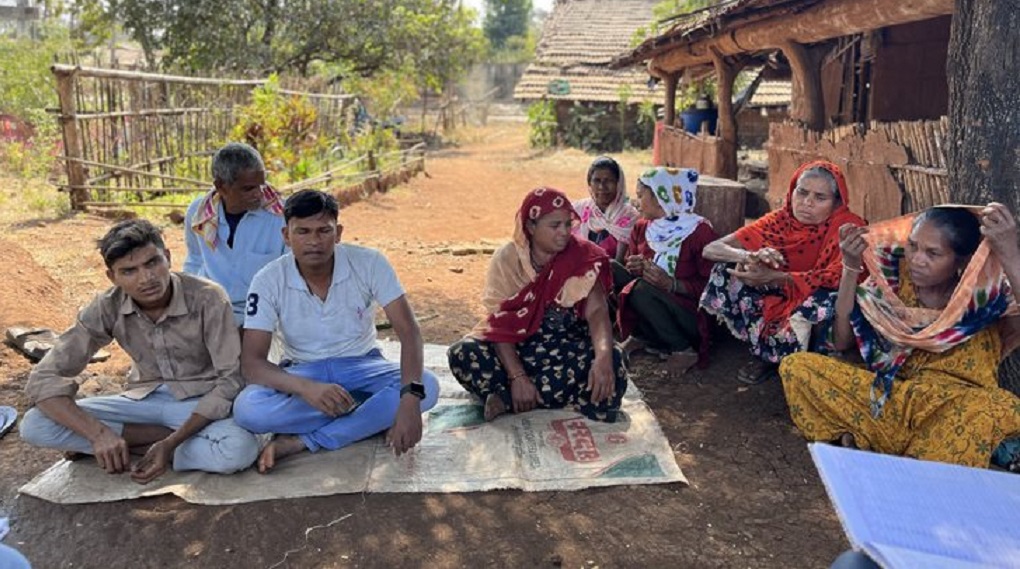
Tribal dairy farmers prosper with ‘solar-irrigated’ fodder
Forest villages that were once a picture of neglect have started prospering, thanks to solar-powered irrigation that helps villagers rear cattle and provide them green fodder.

Forest villages that were once a picture of neglect have started prospering, thanks to solar-powered irrigation that helps villagers rear cattle and provide them green fodder.
Rural economies of several districts have received a boost with sustained efforts at dairy development in the country. With its collection of about 50 lakh litres per day, valued at Rs 20 crore, Banaskantha district in Gujarat perhaps stands out in this respect.
Several districts in drought-prone areas such as Ahmednagar in Maharashtra, Kolar in Karnataka and Chittoor in Andhra Pradesh illustrate this transformative power of milk. These districts are home to non-tribal farming communities. Districts with a tribal domination which have done very well in dairy farming are relatively few in number.
This story is about the almost magical transformation in progress in tribal villages that have taken to rearing dairy animals using solar power for growing fodder.
I have been visiting the rural areas of Narmada, Surat and Vyara districts in south-central Gujarat for the last 35 years. My earliest visit was in 1987. In these villages the government resettled people displaced by smaller dams like the failed one on River Karjan.
I distinctly remember travelling in a ramshackle bus from Netrang to Dediapada in 1987 and walking on a completely lonely interior road to Ghankhetar observing what lay around me in that 3km stretch.

Not a single field had any greenery whatsoever. Most of the hillocks and sloping lands presented a barren look as the crops of sorghum had been harvested and wild grass cut and exported to the then severely drought-hit Saurashtra.
Hordes of non-descript cattle consisted entirely of underfed scraggy cows. The tea occasionally offered was ukalo (black tea usually with jaggery). Homes were all made with earthen walls and roofs made of paddy straw. People too appeared underfed, depraved and sullen.
I visited the area many times until 2014 or so. My most recent visit last February brought out the contrast in sharp relief.
Although all forest lands and revenue wastelands had the same brown colour which central Indian landscapes assume once the monsoon grasses dry up, there were plenty of green patches now. The cattle hordes were no longer prominently seen. Tractors were visible and I was told that they are used for much of the tilling now.
The sharpest contrast came from the villages located in the Mandvi forest range. They were all ‘forest villages’, which meant that they were outside the ambit of revenue administration. Residents in these villages are provided with usufructuary rights on lands which they till.
These villages tend to be at a disadvantage when compared to revenue villages. Wild boar and monkeys pose a threat to their crops. Their travel is restricted due to fear of jungle cats moving around in search of prey. Such villages were in the past, pictures of neglected human settlements.
‘Solar dairying’ has dramatically improved the condition of these villages.

The major incentive for the tribal people to start rearing dairy animals came from Sumul Dairy. This dairy has been offering the most attractive prices to producers since it operates in the most profitable liquid milk markets of Surat and other south Gujarat cities. The high milk prices encouraged the tribal people to keep dairy animals.
However, their old practice of ‘zero input’ dairy was not yielding good profits. While they had some wells, water extraction was a difficult proposition since electricity supply was not available and diesel-based irrigation has been becoming expensive. Also they could not grow crops which would provide a steady supply of fodder to them.
In recent years, solar power based irrigation from dug up wells has made it possible for villagers to grow fodder crops such as pearl millet, sorghum and even lucerne and napier grass.
The solar powered pumps have been installed by an NGO with financial assistance from a CSR fund and some grants and support from the forest department as well. The cost of providing one irrigation to a crop has come down to near zero.
Access to water for irrigation has come as a blessing to the farmers. They now get green fodder from their farms. This supplements the dry grasses and straw from their monsoon paddy crop.
This has encouraged many farmers to increase their animal herd. Women from the households manage the animals and the milk production. Many of them proudly say that their dairy activity gets them up to Rs 20,000 per month.
Such regular cash income has emboldened them to invest in their farms and they earn additional sizeable income by growing vegetables such as cluster beans and bitter gourd. Thus their incomes have risen substantially, enabling their husbands to get a respite from annual migration for wages, and them to run their homes and even educate their children in colleges.
In consequence of this good, steady cash income stream, farmers in these forest villages feel that their life has become better. These villages present the image of prosperity and contentment.
The lead image shows dairy farmers from Gujarat (Photo by Kristy Saikia)
Sanjiv Phansalkar is the director of VikasAnvesh Foundation, Pune. He was earlier a faculty member at the Institute of Rural Management Anand (IRMA). Phansalkar is a fellow of the Indian Institute of Management (IIM) Ahmedabad.